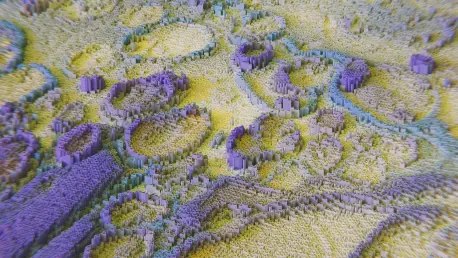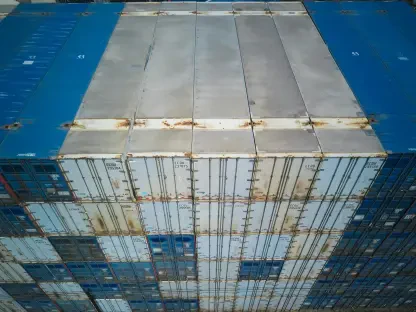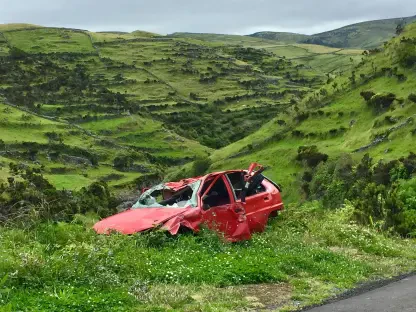As wildfires continue to intensify in both frequency and destruction across the United States, the insurance industry faces an unprecedented challenge in providing adequate coverage for at-risk communities, especially in regions like the West Coast where traditional models fall short. A recent merger between FutureProof Technologies and Terrafuse AI, announced in a press release from San Diego, could mark a turning point for property insurance in wildfire-prone areas. This strategic acquisition brings together FutureProof’s expertise in AI-driven underwriting with Terrafuse’s advanced wildfire risk analytics, aiming to address the dire need for innovative, disaster-resilient solutions. With the backdrop of catastrophic events exposing the fragility of current systems, this partnership holds the potential to redefine how insurers assess and price risks, offering hope to homeowners struggling to secure affordable protection in high-risk zones. The implications of this collaboration extend beyond a single transaction, signaling a broader shift toward technology as a cornerstone of modern insurance practices.
The Power of Combined Technologies
Revolutionizing Risk Assessment and Underwriting
The heart of this merger lies in the powerful integration of FutureProof Technologies’ automated underwriting platform with Terrafuse AI’s highly detailed wildfire risk prediction models. FutureProof has already demonstrated its prowess by underwriting over $1 billion in insurable value since its inception, focusing primarily on automating complex decisions and providing instant quotes for properties deemed too risky by conventional standards. Meanwhile, Terrafuse brings a unique capability to analyze over fifty daily variables at a 300-square-foot resolution, capturing everything from building materials to localized environmental conditions like wind patterns. This combination promises to deliver insurance products that are not only more precise but also more tailored to the specific needs of homeowners in vulnerable areas. By merging these strengths, the companies aim to set a new standard for risk assessment, potentially transforming how policies are crafted for catastrophe-exposed regions where traditional insurers often hesitate to operate.
Beyond the technical synergy, this integration addresses a critical pain point in the market by enhancing the accuracy of pricing models for high-risk properties. Terrafuse’s ability to predict burn probability and damage potential with granular detail complements FutureProof’s proprietary engine, which streamlines underwriting processes to make coverage more accessible. This means insurers could offer policies that better reflect the true risk of a property, avoiding the blanket rejections or exorbitant premiums that have become commonplace in wildfire-prone states. Such precision could also encourage property owners to adopt resilience measures, knowing their efforts might be reflected in more favorable insurance terms. The result is a platform that not only improves decision-making for insurers but also builds trust with consumers who have long felt abandoned by the industry in the face of escalating natural disasters. This dual impact underscores the transformative potential of the merger in reshaping the landscape of property insurance.
Expanding Market Capacity
A significant goal of this merger is to inject much-needed capacity into markets where insurance coverage for wildfire risks is scarce, particularly along the West Coast. FutureProof’s established presence in the Southeast, where it has successfully navigated complex risk profiles, provides a strong foundation for geographic expansion. By leveraging Terrafuse’s specialized analytics, the merged entity is well-positioned to tackle the unique challenges of western states, where wildfires have driven many traditional carriers to exit entirely. This move could mean the difference between homeowners securing affordable protection and being left uninsured in the face of devastating losses. The partnership’s focus on underserved regions aligns with a broader industry imperative to close coverage gaps, ensuring that communities most at risk are not left to bear the financial burden of disasters alone. This strategic expansion signals a bold step toward making insurance a viable safety net in areas long deemed uninsurable.
Furthermore, the combined platform aims to drive affordability by using data-driven insights to balance risk and cost more effectively. Terrafuse’s high-resolution predictions enable a nuanced understanding of individual property risks, which, when paired with FutureProof’s automated systems, could reduce the overhead costs associated with manual underwriting. This efficiency has the potential to lower premiums for consumers while still maintaining profitability for insurers, a delicate balance that has eluded many in high-risk markets. Additionally, the increased capacity brought by this merger might encourage competition among carriers, further benefiting homeowners through better options and pricing. By prioritizing accessibility, the collaboration between these two companies not only addresses immediate market needs but also sets a precedent for how technology can bridge systemic gaps in insurance availability, offering a lifeline to communities grappling with the ever-growing threat of wildfires.
Addressing a Growing Crisis
Responding to Climate-Driven Challenges
The merger between FutureProof Technologies and Terrafuse AI emerges at a pivotal moment when the insurance industry is grappling with the escalating impacts of climate change, particularly the rise in catastrophic wildfires that have reshaped entire landscapes. Recent events have laid bare the inadequacies of traditional risk models, with insurers facing staggering losses and often choosing to withdraw from volatile markets like California. This partnership positions itself as a direct response to such challenges, harnessing artificial intelligence and machine learning to enable dynamic, data-informed decision-making. By focusing on predictive analytics and real-time data, the combined technology offers a way to anticipate risks more accurately than outdated frameworks, potentially preventing the kind of widespread coverage pullbacks that have left many homeowners vulnerable. This approach reflects a wider trend in the insurtech sector, where innovation is increasingly seen as the key to adapting to a rapidly changing environment.
Moreover, the emphasis on property resilience within this merger highlights a proactive stance toward mitigating the effects of natural disasters. Beyond simply assessing risks, the integrated platform could incentivize homeowners to implement protective measures—such as fire-resistant materials or defensible space—by factoring these into pricing models. This shift toward prevention rather than reaction marks a significant departure from conventional insurance practices, which often focus solely on post-disaster payouts. Such incentives could foster a culture of preparedness in high-risk areas, reducing overall damage and insured losses over time. As climate-driven events continue to strain the industry, the forward-thinking nature of this collaboration underscores the potential for technology to not only manage current crises but also build a more sustainable framework for the future, ensuring that communities are better equipped to withstand the growing threat of wildfires.
Balancing Innovation with Potential Hurdles
While the promise of this merger is substantial, it is important to recognize that the path to transforming wildfire insurance through AI is not without obstacles. Scaling sophisticated models across diverse geographic regions presents a complex challenge, as wildfire risks vary widely based on local conditions and infrastructure. What works effectively in one area may require significant adaptation in another, potentially slowing the rollout of new products. Additionally, the insurance industry operates within a tightly regulated environment, where innovative approaches must navigate a maze of state-specific rules and compliance requirements. These factors could delay or complicate the implementation of the merged platform, even as the need for solutions grows more urgent. Acknowledging these hurdles provides a balanced perspective on the ambitious goals set by FutureProof and Terrafuse, tempering optimism with the reality of systemic constraints that often accompany groundbreaking change.
Despite these challenges, the dual vision of market expansion and mission-driven accessibility offers a compelling roadmap for overcoming potential setbacks. FutureProof’s leadership brings a proven track record of adapting AI tools to meet market demands, while Terrafuse’s commitment to affordability ensures that the focus remains on serving communities in need. Together, their combined expertise could pave the way for innovative solutions that not only address immediate regulatory or scalability issues but also influence broader policy discussions around disaster insurance. By maintaining a focus on precision through high-resolution analytics and automation, the partnership stands to redefine industry standards, pushing other players to adopt similar technologies. As the merged entity navigates these complexities, it lays a foundation for future advancements, reflecting a determination to turn obstacles into opportunities for reshaping how wildfire risks are managed and insured.









